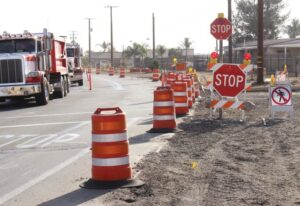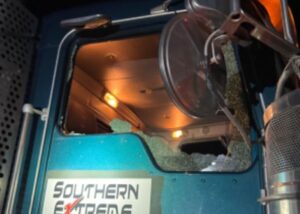HARTFORD, Conn. — Gov. Ned Lamont’s latest transportation improvement proposal limits new tolling to 14 specific bridge, interchange and highway projects, and sets in motion a possible fully functioning airport in south-central Connecticut. It also invests millions in new commuter rail cars and public busses.
The 10-year, $21.1 billion plan, known as CT2030, will be unveiled publicly on Thursday. The Associated Press on Wednesday obtained a copy of the proposed executive summary of the initiative, which promises “swift and safe” roads, “fast and functional” trains and faster, safer, more convenient and reliable travel across the state. Unlike previous transportation plans, this one targets new spending to a limited number of specific projects while increasing the state’s investment in preserving the current system.
“CT2030 doesn’t promise the kitchen sink,” the summary reads. “It prioritizes and pays for the most vital improvements for Connecticut residents.”
Some Democratic legislative leaders gave the proposal early, positive reviews on Wednesday, after receiving a closed-door briefing from the Democratic governor’s staff.
“I think this a plan, in its original form, as it is now, that might need a little work,” said House Speaker Joe Aresimowicz, D-Berlin. “But it’s something I can entirely embrace.”
Unlike earlier transportation proposals, this plan focuses heavily on addressing the state’s worst traffic chokepoints, an idea welcomed by both Democrats and Republicans. According to the summary, Connecticut has six of the nation’s 100 worst traffic bottlenecks.
“I think no question, commuters in the state of Connecticut complain the most about driving down the highway and all of a sudden you’re slamming on your brakes,” said Rep. Vincent Candelora, R-North Branford, who credited Lamont with “focusing on the right issues.” But Candelora said the GOP questions whether tolls are still needed to accomplish that goal. According to the summary, Lamont’s plan would rely on a combination of borrowing and limited tolls, referred to as “user fees,” ranging from 50 cents to $1 for passenger vehicles and $3.50 to $7 for heavy trucks. There would be 20% discounts for drivers with EZ-Pass transponders.
The proposed tolling, which the summary calls “modest,” would begin in 2023. The administration estimates about 40% of the revenue generated would come from out-of-state drivers. A previous transportation plan that was ultimately disregarded earlier this year would have imposed about 50 overhead tolling gantries on Interstates 84, 91, 95 and parts of Route 15.
“Now that we’re looking at a more realistic, scaled-back plan, we think that there could be ways to fund this program without adding a new revenue stream,” Candelora said.
According to the proposed executive summary, Lamont’s plan relies partly on a special low-cost borrowing program from the federal government, which needs to be repaid with a dedicated funding stream. Candelora said that doesn’t necessarily have to be highway tolls.
Tolling opponents agree.
Cherie Juhnke of Plainville, who stood outside Wednesday’s meeting holding a “no tolls” sign, was unimpressed that this latest transportation proposal would limit the tolls to 14 bridges, interchanges and highway projects — a figure that could change.
“We pay enough,” Juhnke said. “No tolls. They’ll never go away if they go up.”
Besides highway improvements, Lamont’s new plan includes financial investments in rail, buses, ports and airports. It calls for the state to begin working with the federal government on a plan to transform either Tweed Airport in New Haven or Sikorsky in the Bridgeport/Stratford area, into an airport with 25 daily flights. There’s also funding in the plan for new commuter rail cars and other improvements with a goal of reducing round-trip commuter travel times by 20 minutes a day between New Haven and Penn Station in New York City.
It’s uncertain when there might be a vote on the proposal, which could change in future negotiations. Aresimowicz said he’d like to see a vote in a special session. However, he didn’t rule out the issue coming up in the next regular legislative session, which convenes in February.
The Associated Press is an independent global news organization dedicated to factual reporting. Founded in 1846, AP today remains the most trusted source of fast, accurate, unbiased news in all formats and the essential provider of the technology and services vital to the news business. The Trucker Media Group is subscriber of The Associated Press has been granted the license to use this content on TheTrucker.com and The Trucker newspaper in accordance with its Content License Agreement with The Associated Press.








